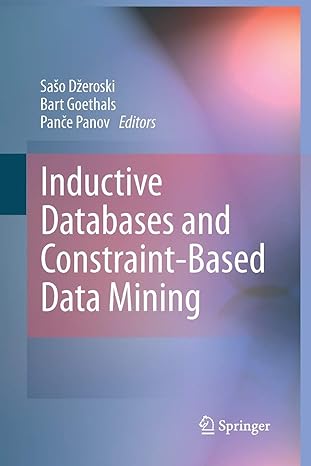Question
Read the following about the Heartbleed bug. Then discuss how you would fix it. Heartbleed is a security bug in the OpenSSL cryptography library, which
Read the following about the Heartbleed bug. Then discuss how you would fix it.
Heartbleed is a security bug in the OpenSSL cryptography library, which is a widely used implementation of the Transport Layer Security (TLS) protocol. It results from improper input validation (due to a missing bounds check) in the implementation of the TLS heartbeat extension, thus the bug's name derives from heartbeat. The vulnerability is classified as a buffer over-read, a situation where more data can be read than should be allowed.
The RFC 6520 Heartbeat Extension tests TLS/DTLS secure communication links by allowing a computer at one end of a connection to send a Heartbeat Request message, consisting of a payload, typically a text string, along with the payload's length as a 16-bit integer. The receiving computer then must send exactly the same payload back to the sender.
The affected versions of OpenSSL allocate a memory buffer for the message to be returned based on the length field in the requesting message, without regard to the actual size of that message's payload. Because of this failure to do proper bounds checking, the message returned consists of the payload, possibly followed by whatever else happened to be in the allocated memory buffer.
Heartbleed is therefore exploited by sending a malformed heartbeat request with a small payload and large length field to the vulnerable party (usually a server) in order to elicit the victim's response, permitting attackers to read up to 64 kilobytes of the victim's memory that was likely to have been used previously by OpenSSL. Where a Heartbeat Request might ask a party to "send back the four-letter word 'bird'", resulting in a response of "bird", a "Heartbleed Request" (a malicious heartbeat request) of "send back the 500-letter word 'bird'" would cause the victim to return "bird" followed by whatever 496 characters the victim happened to have in active memory. Attackers in this way could receive sensitive data, compromising the confidentiality of the victim's communications. Although an attacker has some control over the disclosed memory block's size, it has no control over its location, and therefore cannot choose what content is revealed.
Step by Step Solution
There are 3 Steps involved in it
Step: 1

Get Instant Access to Expert-Tailored Solutions
See step-by-step solutions with expert insights and AI powered tools for academic success
Step: 2

Step: 3

Ace Your Homework with AI
Get the answers you need in no time with our AI-driven, step-by-step assistance
Get Started


